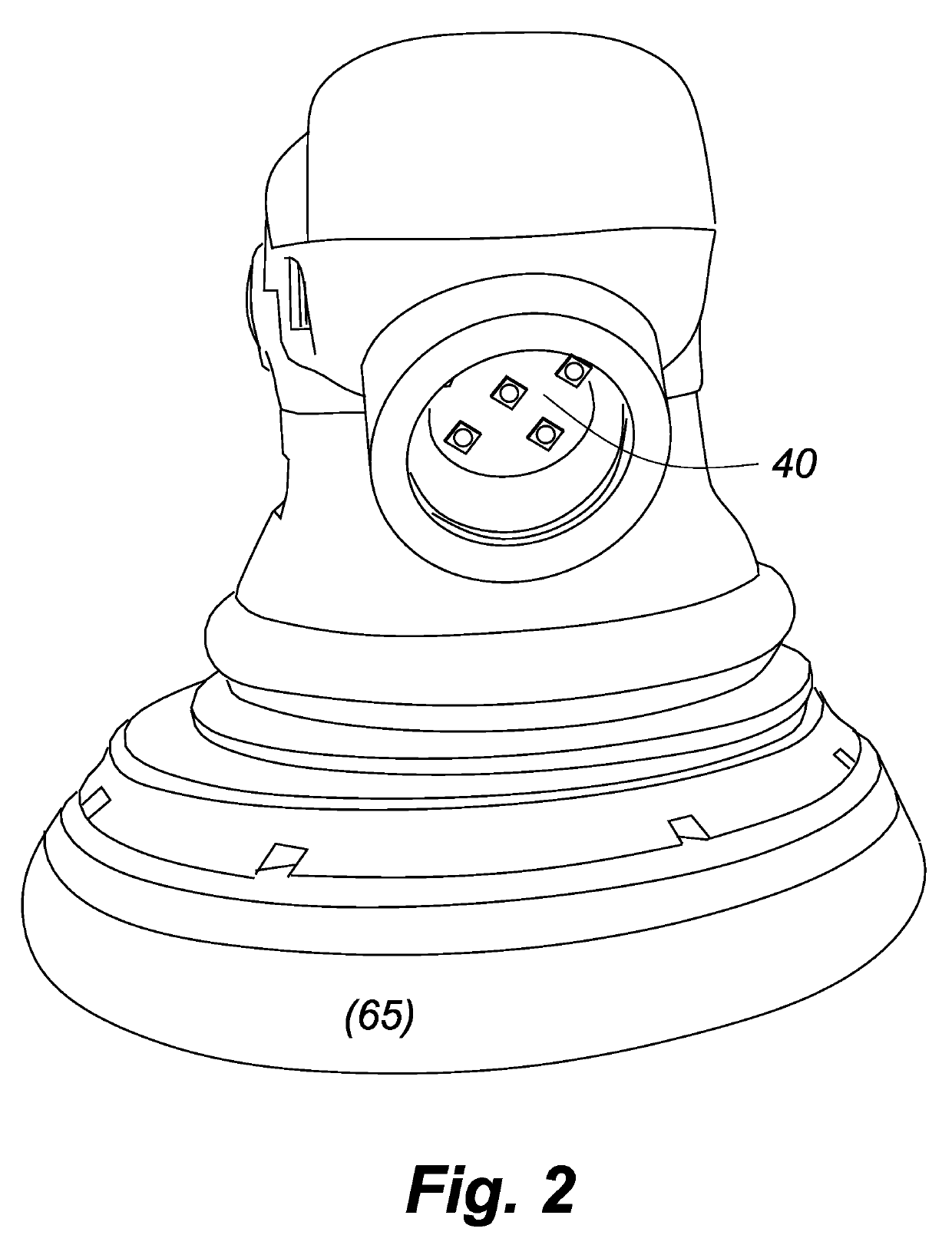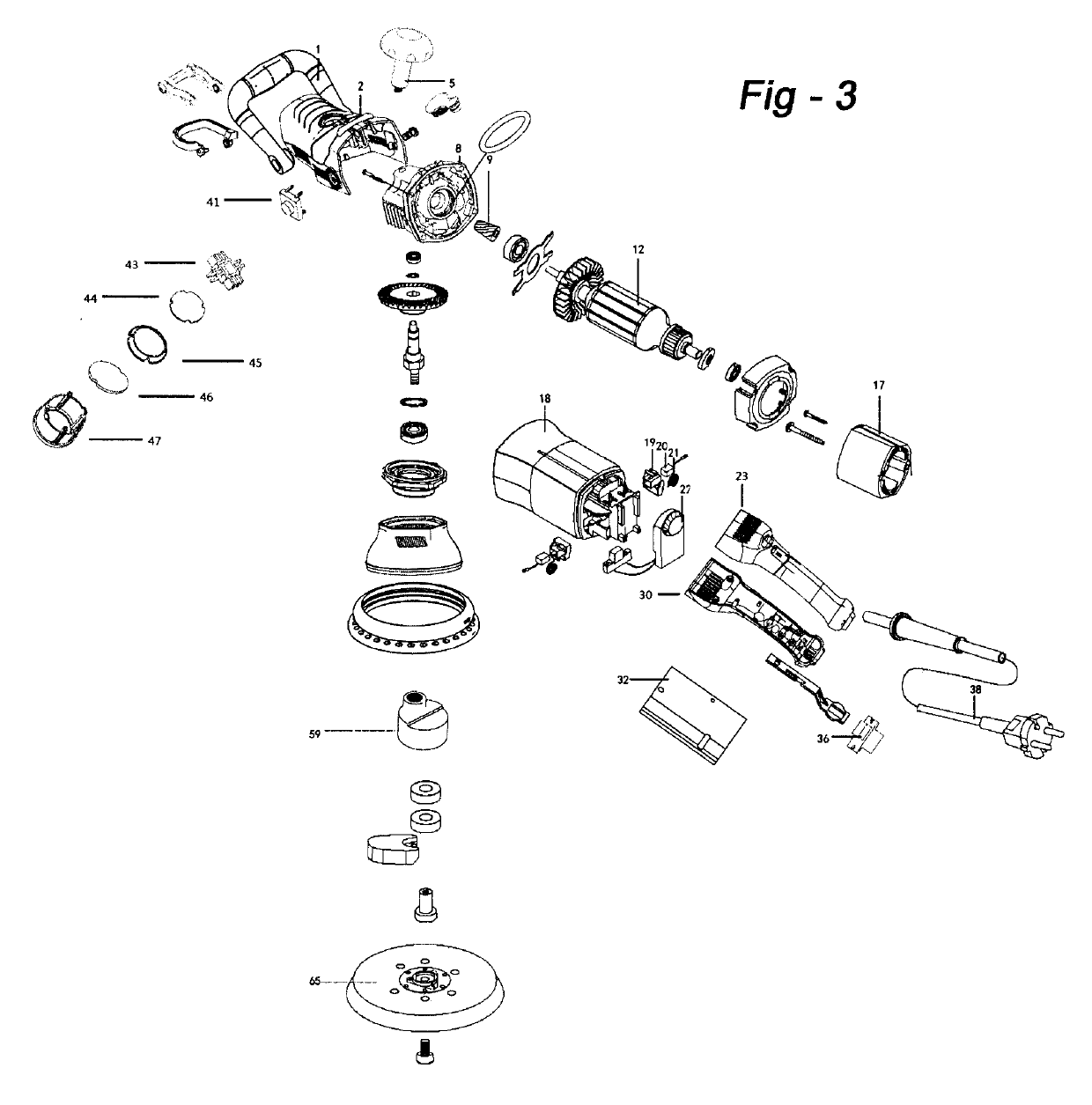Intelligent polisher/buffer with selective color-matching light
a polisher and selective technology, applied in the direction of semiconductor devices for light sources, lighting and heating apparatus, light source combinations, etc., can solve the problems of inability to inability to accurately achieve an acceptable car, and compromised vehicle surfaces
- Summary
- Abstract
- Description
- Claims
- Application Information
AI Technical Summary
Benefits of technology
Problems solved by technology
Method used
Image
Examples
Embodiment Construction
[0015]Prior to describing the invention in detail, certain definitions will be provided as follows:[0016]1) A Lumen of light refers to a measure the relative intensity or brightness from a single source, such as the amount of light generated by one candle.[0017]2) The Kelvin Scale is an extension of the Celsius scale based on the color of the light emitted from a hypothetical “black body.” The Kelvin scale refers to the amount of energy needed to transform a black body into a corresponding color expressed with a numerical value in (degrees) K.[0018]3) Color Temperature refers to the perceived color of a light source, as interpreted by the human eye, measured in the Kelvin scale. Colors with lower Kelvin temperatures are considered “warm,” as they containing orange to red light, whereas colors with higher Kelvin temperatures are considered “cool” (i.e., more blue light).[0019]4) Daylight is taken to mean “normal daylight” at mid-day, when the sun is at its highest point in the sky, w...
PUM
| Property | Measurement | Unit |
|---|---|---|
| diameter | aaaaa | aaaaa |
| color temperature | aaaaa | aaaaa |
| color temperature | aaaaa | aaaaa |
Abstract
Description
Claims
Application Information
 Login to View More
Login to View More - R&D
- Intellectual Property
- Life Sciences
- Materials
- Tech Scout
- Unparalleled Data Quality
- Higher Quality Content
- 60% Fewer Hallucinations
Browse by: Latest US Patents, China's latest patents, Technical Efficacy Thesaurus, Application Domain, Technology Topic, Popular Technical Reports.
© 2025 PatSnap. All rights reserved.Legal|Privacy policy|Modern Slavery Act Transparency Statement|Sitemap|About US| Contact US: help@patsnap.com



